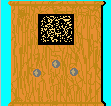
| Hawes Mechanical Television Archive | by James T. Hawes, AA9DT |

|
Build a Mechanical TV Monitor, Part 2 |
|
|---|---|---|
|
|
||
|
Above is the schematic diagram. If your CD player has an isolated output, the input capacitor may not be necessary.
with Radio Shack part numbers
Make three, identical LED strings (4-LEDs per string) from these parts...
Go to Page: 1 2 3 4 Next
|
|
|
|||
|
Copyright © 2006 by James T. Hawes. All rights reserved.
•URL: http://www.hawestv.com/mtv_page/mtv_page2.htm
|
|||